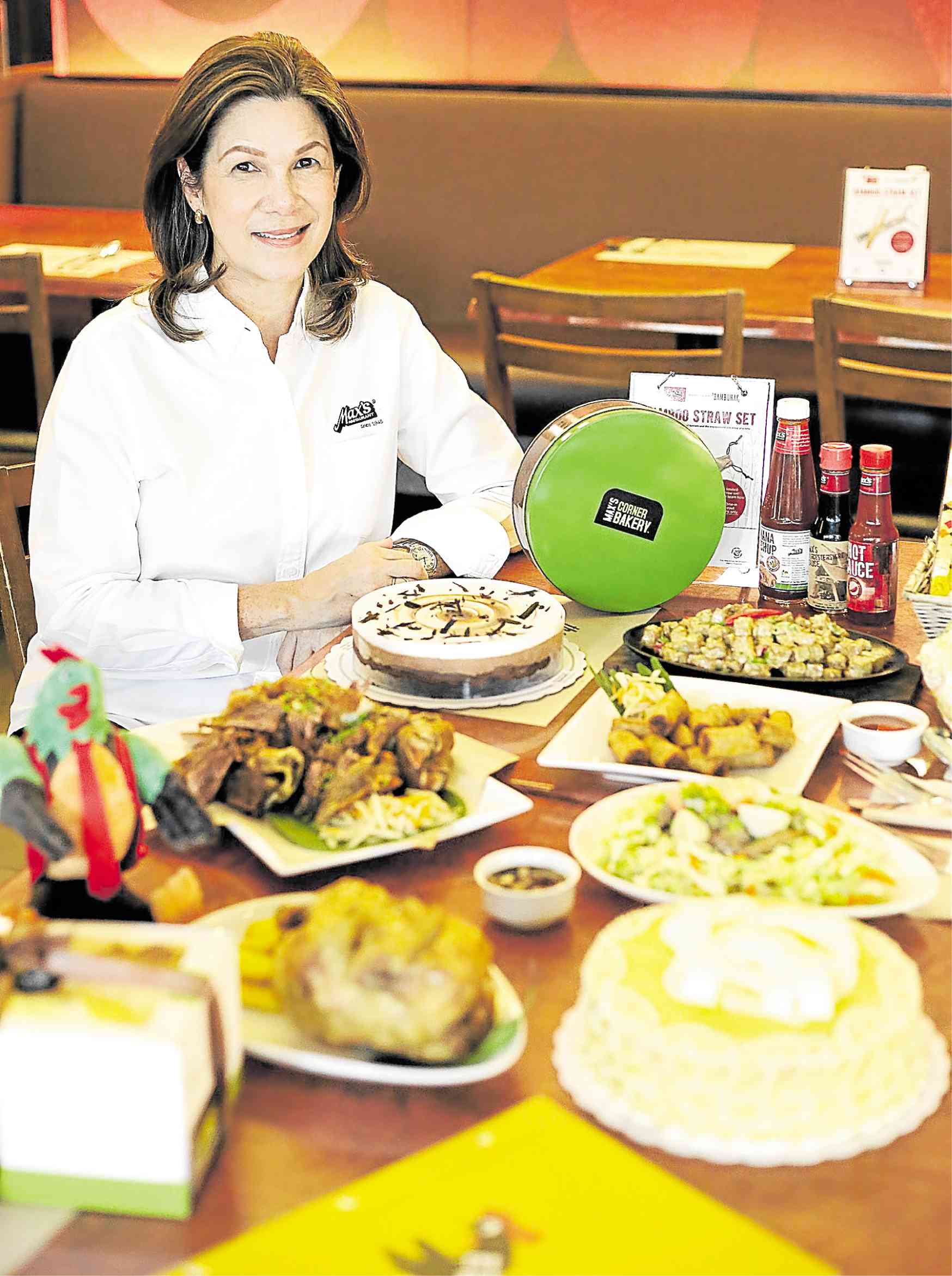
There are few things baby boomers, Gen Xers, millennials and whatever young people are calling themselves these days—Gen Z? Postmillennials?—agree on.
One of these is that Max’s still makes a damn good chicken dinner.
Those eligible for the senior citizen discount might remember it as a special family treat for graduation day or a birthday. For Mom and Dad, it might have been a welcome midway stop on the drive up to Baguio. The kids? Likely as not they get their half-chickens delivered through an app on their smartphones.
In any case, savvy marketing and solid business fundamentals have made “the house that fried chicken built” the leading player in casual dining and a bonafide Filipino success story.
“The food industry is vibrant,” says Carolyn Trota-Salud, director of the Max’s Group that now includes, apart from Max’s Restaurant, Yellow Cab, Pancake House, Krispy Kreme, Jamba Juice and a few other brands you’ll recognize.
“Filipinos being foodies—they’ve been everywhere and they know how to eat—are still looking for consistency and quality, and that’s what Max’s gives.”
Heritage can only take you so far, however.
Max’s has kept the brand au courant by investing heavily in its digital advertising campaigns.
‘Hugot’ ads
By now it’s an advertising truism that if you want customers to open their purse strings, first you have to tug at their heartstrings.
Max’s was an early adopter of the hugot digital ad starting in 2004, when it released a trilogy of ads starring Piolo Pascual and Isabel Oli.
This was followed by more ads capitalizing on the popularity of Gary Valenciano and Coco Martin, and a series directed by Brillante Ma Mendoza highlighting the brand’s prominence in graduations, baptisms and weddings.
More recently, however, the brand has shifted away from emotional manipulation toward quirkier, more ironic storytelling epitomized by its award-winning and viral “End Alienation” and its animated “Come Together” ads.
“It’s the millennials, the digitally savvy, who watch it,” says Salud. “We have stories online that go up to six minutes. To commit yourself for six minutes—that means you’re interested in what the brand has to say.”
Going public
The brand’s renewed energy started when the family-owned company, which dates back to 1945, went public in 2008. The Max’s Group is now the largest casual dining restaurant company in the country, with stores throughout the Philippines and in North America, the Middle East and, most recently, Singapore.
“One thing that’s helped us is having a North Star, knowing our core values as a family that’s housed inside the brand,” says Salud. “We’re custodians of this and it’s going to be passed on to the next generation of Filipinos.”
Max’s has managed to stay relevant by adapting to the changing tastes and eating habits of the Filipino.
For one thing, since the days when Lola or a stay-at-home mother could spend hours in the kitchen simmering bulalo or making kare-kare from scratch are now long gone, Max’s has become the place to go for old-school Filipino dishes including kare-kare, pancit Canton, lumpiang Shanghai and crispy pata.
“It’s comfort food, real food,” says Salud. “It takes hours to cook, and what is now occasional at home you can have every day at Max’s. Three years ago, we went into bowls. We call them Ruby’s Favorites. People still come in groups but they can order individually and share a half chicken or sizzling tofu.”
Max’s Restaurant, with its strutting rooster logo may be iconic, but a lot of its new customers have rarely or never even been in one.
Delivery
“We have a huge delivery business,” she says. “It’s our largest market, earning more than a billion pesos a year and growing at 20 percent. We have a tie-up with Grab. We have our own call center and delivery group, but we’ve also embraced aggregators. We have an app and you can order online, or chat with us through our chatbot.
Max’s tried fast-food-style counter service a few times, but has since concentrated on its strengths which is value-for-money casual dining service, strategic location through its brick-and-mortar restaurants, mall outlets and travel lodges, and slow but steady expansion.
Despite its leading position in the industry, Max’s generally likes to keep it low-key when venturing into new territories.
“If it’s a small community, we don’t want a screaming Max’s sign there that will kill off the locals,” says Salud. “Our stores in Vigan, for instance, are inside old houses, we have not built any outside. Once Max’s comes in, we become part of the community. We try to hire locally, and source locally, we embrace the community’s ambience and persona. We know where to go, we don’t have to lord over everything. We should be complementary.”
Salud belongs to the third generation of the family managing the company, along with her brother Robert Trota who’s the current president and CEO of the group.
“We learned the business very hands-on,” says Salud. “My brother started out cleaning the chicken when he was 13. I worked in the bake shop at Max’s Baclaran since I was 17.”
Things are going to be a bit different for the fourth generation, she says. They will now have to earn a university degree and gain three years of work experience outside Max’s before they can apply for a position.
Now in its 74th year, Max’s will open its first branch on Edsa this month.
“It’s going to be our first multibrand store under one roof, with Max’s, Pancake House, Yellow Cab, Krispy Kreme. It’s aimed at the new millennial customers—Daddy wants Max’s, Mommy wants Pancake House, son wants Yellow Cab and daughter wants Krispy Kreme— all in one stop.”